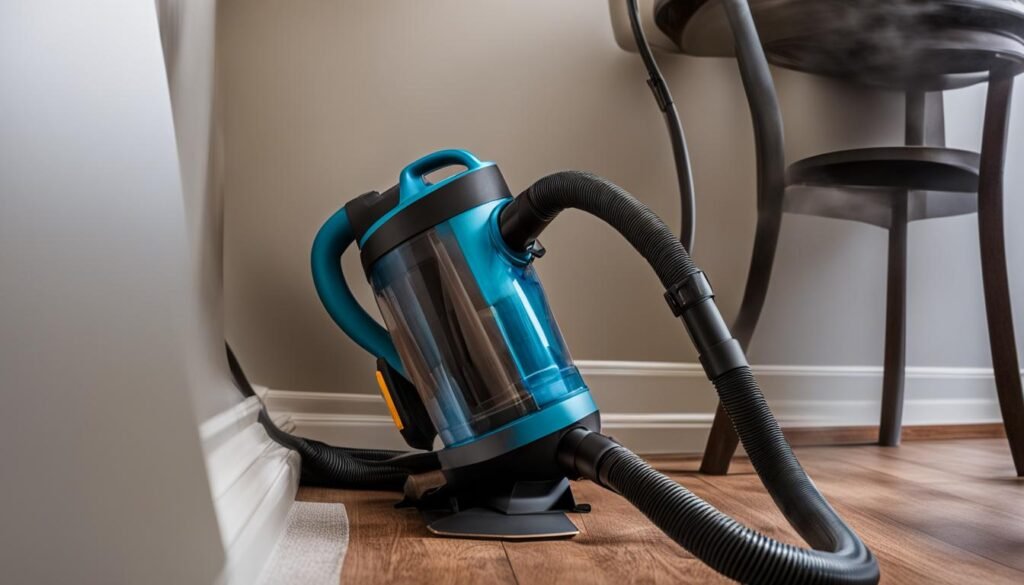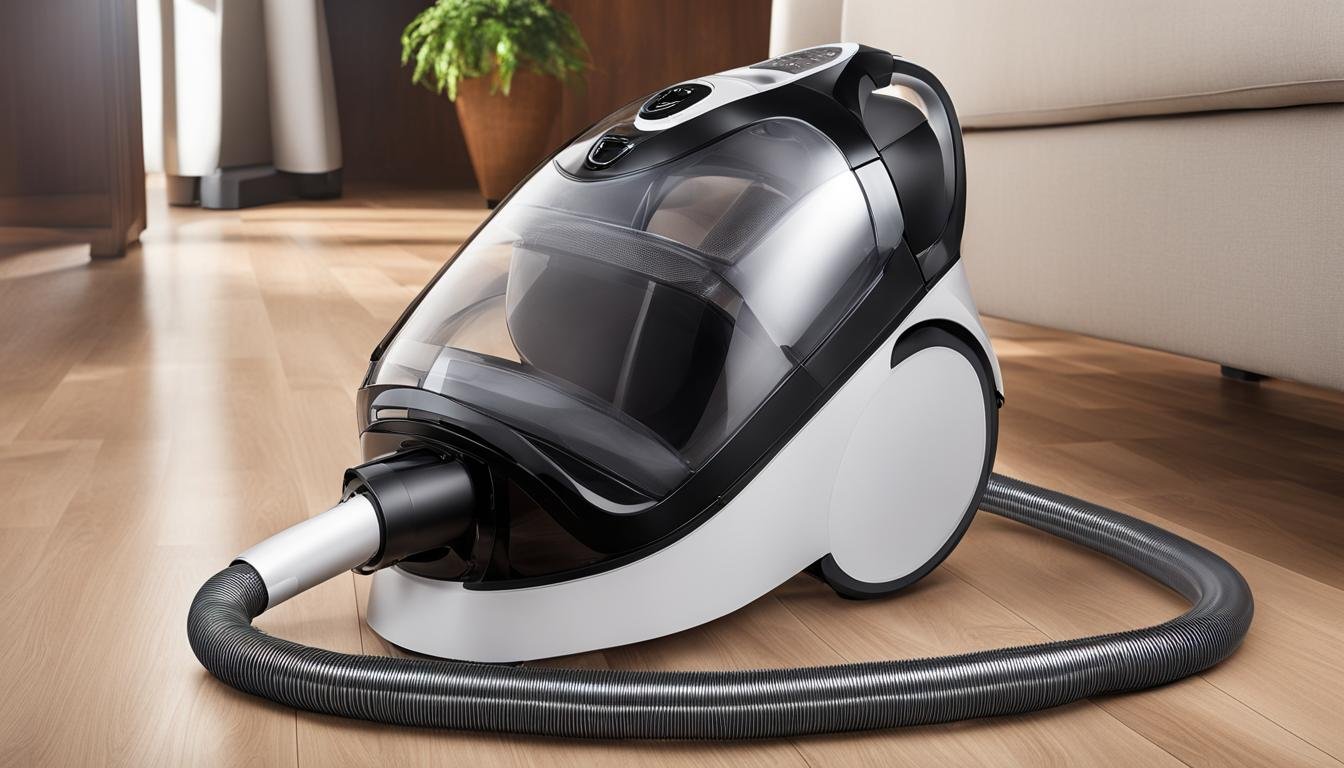If your vacuum cleaner is blowing out hot air, it can be a frustrating issue to deal with. Not only does it hinder efficient cleaning, but it may also indicate an underlying problem that needs attention. Fortunately, there are several troubleshooting tips and fixes that can help you cool down your vacuum and get it back to peak performance.
One common cause of a vacuum blowing out hot air is a clog in the system. When there’s a blockage, it affects the suction and airflow, causing the vacuum to overheat. To fix this, start by unplugging the vacuum and inspecting for any obstructions. Clogs can occur in the vacuum head, hose, or where the hose meets the vacuum unit. Once you locate the clog, you can use your fingers or a thin tool to remove it carefully.
Regular maintenance is also crucial for preventing overheating issues. Make sure to regularly empty the canister or bag of your vacuum cleaner. An overly full canister or bag can reduce suction power and lead to overheating. Additionally, clean or replace the filters as recommended by the manufacturer to ensure optimal airflow and prevent the accumulation of dust and debris.
If troubleshooting and maintenance steps don’t resolve the hot air issue, it may be time to consider professional vacuum repair. Expert technicians have the knowledge and tools to diagnose and fix complex issues, giving your vacuum a new lease on life.
Key Takeaways:
- A vacuum blowing out hot air can indicate a clog or other underlying issue.
- Troubleshooting steps include checking for clogs and performing regular maintenance.
- Emptying the canister or bag regularly and cleaning/replacing filters can prevent overheating.
- If troubleshooting doesn’t work, consider professional vacuum repair.
- Regular maintenance and proper care can extend the lifespan of your vacuum cleaner.
Preventing Vacuum Clogs for Optimal Performance
One of the best ways to ensure optimal performance and extend the lifespan of your vacuum is by preventing clogs. Proper vacuum maintenance plays a crucial role in keeping your vacuum running smoothly and efficiently.
Regularly emptying the canister or bag is essential to avoid vacuum clogs. If the canister or bag becomes too full, it can decrease suction power, cause the motor to overheat, and impact the overall effectiveness of your vacuum. To prevent this, empty the canister or bag before it reaches half or full capacity.
Tip: Check the canister or bag regularly and empty it when it’s about halfway full to maintain optimal performance.
Another important preventive measure is removing large debris from the floor before vacuuming. Paper clips, coins, or other sizable objects can cause clogs if vacuumed up. Taking a moment to visually inspect and remove any large debris from the floor can help prevent clogs and ensure uninterrupted vacuuming.
Avoiding vacuuming wet materials is also crucial to prevent clogs and potential damage to your vacuum. Moisture can cause the clogging of filters or other components. If you need to clean liquids or wet spills, use specialized equipment designed for wet cleaning instead.
Remember: Always follow the manufacturer’s instructions regarding the appropriate use of your vacuum and its limitations.
Lastly, take a quick look at the floor surface before vacuuming. Inspecting for potential hazards such as loose threads, cables, or other items that could cause clogs will save you time and ensure a more efficient cleaning process.
Quick Tips to Prevent Vacuum Clogs:
- Empty the canister or bag regularly
- Remove large debris before vacuuming
- Avoid vacuuming wet materials
- Inspect the floor before vacuuming

| Cause of Clogs | Preventive Measures |
|---|---|
| Overflowing canister or bag | Regularly empty the canister or bag before it becomes half or full |
| Large debris on the floor | Remove any large debris before vacuuming |
| Vacuuming wet materials | Avoid vacuuming wet materials to prevent clogs and damage |
| Potential clogging hazards on the floor | Visually inspect the floor before vacuuming to prevent clogs |
Upgrading to a Self-Emptying Vacuum for Convenience and Efficiency
If you’re tired of dealing with a vacuum spitting dust and the inconvenience of frequent emptying, it may be time to consider upgrading to a self-emptying vacuum. These cutting-edge vacuums offer a range of features that provide both convenience and efficiency, making your cleaning chores a breeze.
One of the standout features of self-emptying vacuums is their advanced filtration system. Equipped with high-quality HEPA filters, these vacuums effectively capture and contain dust particles, ensuring cleaner indoor air quality. Say goodbye to allergies and hello to a fresher, healthier home environment.
Another advantage of self-emptying vacuums is their smart reminders for cleaning and maintenance tasks. These vacuums will remind you when it’s time to clean or change filters, ensuring that your vacuum is always operating at its best. No more guessing or forgetting essential maintenance tasks.
With the self-emptying function, a docking station automatically empties the dust bin, preventing dust from being blown back out and ensuring optimal airflow. This means no more messy and time-consuming manual emptying. Sit back, relax, and let your vacuum take care of itself.
Make the smart choice and upgrade to a self-emptying vacuum today. Enjoy the convenience of hassle-free cleaning, improved indoor air quality, and a dust-free home. Say goodbye to vacuum spitting dust and hello to a whole new level of cleaning efficiency.
FAQ
Why is my vacuum blowing out hot air?
If your vacuum is blowing out hot air, it may be a sign of an underlying issue. One common cause is a clogged vacuum, which can affect suction and airflow. To fix a clog, unplug the vacuum and locate the source – it could be in the vacuum head, hose, or where the hose meets the vacuum. Once you find the clog, you can use your fingers or a thin tool to remove it. If the issue persists, it may be time to take your vacuum in for repair.
How can I prevent vacuum clogs?
One of the best ways to prevent vacuum clogs is to practice proper maintenance. This includes regularly emptying the canister or bag before it becomes half or full. Additionally, remove any large debris from the floor before vacuuming to avoid clogs. Avoid vacuuming wet materials as this can damage the vacuum. Finally, visually inspect the floor before vacuuming to ensure there are no potential clogging hazards.
Should I consider upgrading to a self-emptying vacuum?
If you’re looking for a convenient and efficient solution to the problem of vacuum spitting dust, consider upgrading to a self-emptying vacuum. These advanced vacuums come with features such as a self-emptying function, where a docking station automatically empties the dust bin, ensuring optimal airflow and preventing dust from being blown back out. They also often have advanced filtration systems, such as HEPA filters, improving indoor air quality. Additionally, self-emptying vacuums offer smart reminders for cleaning and maintenance tasks, ensuring that your vacuum is always in top condition.





Leave a Reply